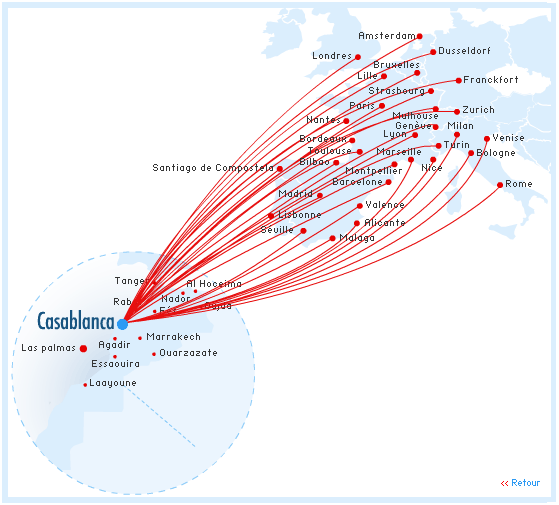The Race To Fix Air Traffic Control: Addressing The "I Don't Know Where You Are" Problem

Table of Contents
The Current Challenges of Air Traffic Control
The existing air traffic control infrastructure faces significant hurdles in managing the ever-increasing demands of modern air travel. These challenges stem from outdated technology, escalating air traffic volume, and consequential safety concerns.
Outdated Infrastructure
Many air traffic control centers rely on legacy air traffic control systems. These systems, often decades old, struggle to keep pace with the demands of modern aviation.
- Radar limitations: Older radar systems offer limited range and accuracy, hindering precise aircraft tracking, particularly in challenging weather conditions.
- Communication bottlenecks: Reliance on voice communication between air traffic controllers and pilots is prone to human error and communication breakdowns. The lack of digital data exchange increases the risk of misunderstandings.
- Lack of interoperability: Different ATC systems often lack interoperability, making data sharing and seamless integration across regions challenging. This fragmented approach hampers efficient airspace management.
- Inefficient data processing: Outdated data processing capabilities slow down response times and limit the ability to handle the sheer volume of flight data generated daily. This impacts both safety and efficiency. The need for efficient ATC infrastructure is undeniable.
Increased Air Traffic Volume
Global air passenger numbers have been steadily increasing for decades. This exponential growth in air travel places immense strain on the existing ATC infrastructure.
- Flight density: Increased flight density, particularly around major airports and busy air corridors, creates a higher risk of conflicts and necessitates more sophisticated management tools.
- Airspace capacity constraints: The current ATC system struggles to efficiently manage airspace capacity, leading to delays and increased fuel consumption. Solving air traffic management challenges requires a significant technological upgrade.
- Increased complexity: The increasing number of unmanned aerial vehicles (UAVs or drones) further complicates the air traffic management landscape, requiring new methods for integration and tracking.
Safety Concerns
Inaccurate tracking and communication breakdowns pose significant safety risks. The consequences of ATC system failures can be catastrophic.
- Near-miss incidents: Reports of near-miss incidents highlight the vulnerabilities of the current system and the potential for disastrous consequences.
- Mid-air collisions: While exceedingly rare, the potential for mid-air collisions remains a significant concern, emphasizing the importance of reliable tracking and communication.
- Delays and disruptions: ATC system failures and inefficiencies cause widespread delays and disruptions, affecting passengers, airlines, and the wider economy. Improving air safety is paramount.
Technological Solutions for Modernization
Addressing the shortcomings of the current system requires a comprehensive modernization effort embracing several key technological advancements.
Automatic Dependent Surveillance-Broadcast (ADS-B)
ADS-B is a game-changer in air traffic management. This technology allows aircraft to broadcast their precise location, altitude, speed, and other critical data directly to ground stations and other aircraft.
- Enhanced accuracy: ADS-B provides significantly more accurate and real-time positioning data compared to traditional radar systems.
- Improved situational awareness: This increased accuracy enhances the situational awareness of air traffic controllers, allowing them to make more informed decisions and manage traffic flow more efficiently.
- Wider coverage: ADS-B can provide coverage in areas where traditional radar is limited, such as over oceans or remote regions. ADS-B implementation is vital for modern ATC.
Data Fusion and Artificial Intelligence (AI)
The integration of data fusion and AI offers significant potential for enhancing the efficiency and safety of air traffic control.
- Predictive capabilities: AI algorithms can analyze vast amounts of data to predict potential conflicts and suggest proactive measures to mitigate risks.
- Optimized flight routing: AI can optimize flight routes to reduce delays, minimize fuel consumption, and decrease overall environmental impact.
- Enhanced communication efficiency: AI-powered systems can automate routine tasks, freeing up air traffic controllers to focus on more complex situations. The potential of AI in air traffic control is enormous. The use of data analytics for ATC is key to this success.
Network Modernization
Upgrading communication networks and data processing systems is crucial for supporting the increased data volumes and demands of modern air traffic management.
- Fiber optic networks: High-bandwidth fiber optic networks are essential for transmitting large amounts of data quickly and reliably.
- Cloud computing: Cloud-based solutions offer scalability and flexibility, allowing the ATC system to adapt to changing demands.
- Improved data security: Robust cybersecurity measures are crucial to protecting sensitive flight data and ensuring the integrity of the ATC system. Investment in ATC network infrastructure and modernizing ATC communications is a must.
The Economic and Social Benefits of Modernization
Investing in air traffic control modernization brings significant economic and social benefits.
Improved Efficiency and Reduced Delays
Modernized ATC systems lead to better resource allocation and smoother traffic flow.
- Reduced delays: Minimizing delays translates to significant cost savings for airlines and passengers, as well as improved on-time performance.
- Improved fuel efficiency: Optimized flight routes and reduced delays contribute to lower fuel consumption, decreasing operating costs and reducing carbon emissions.
- Enhanced passenger experience: Reduced delays and a smoother travel experience lead to greater passenger satisfaction and increased confidence in air travel. The cost-benefits of ATC modernization are substantial. Improving ATC efficiency is a major benefit.
Enhanced Safety and Reduced Risk
Modernization efforts enhance safety and reduce risks associated with air travel.
- Reduced accidents and near-misses: Improved surveillance and communication dramatically reduce the risk of accidents and near-miss incidents.
- Improved safety statistics: Modernization efforts aim to improve safety statistics and enhance the overall safety record of air travel.
- Enhanced passenger confidence: Higher safety standards boost passenger confidence and encourage more people to choose air travel. Air traffic safety improvements will dramatically increase public confidence in air travel and reduce mitigating ATC risks.
Conclusion
The "I don't know where you are" problem in air traffic control is a critical issue demanding immediate attention. Modernization efforts utilizing technologies like ADS-B, AI, and robust network upgrades are crucial for ensuring the safety and efficiency of our skies. By investing in air traffic control modernization, we can significantly improve air safety, reduce delays, and unlock the full potential of air travel. The race to fix air traffic control is not just about technology; it's about safeguarding lives and securing a future where air travel is safer, more efficient, and more reliable. Let's accelerate the implementation of air traffic control modernization solutions today.

Featured Posts
-
 Simone Biles Self Bought Luxury Goods Fan Fury Over Husbands Presence
May 07, 2025
Simone Biles Self Bought Luxury Goods Fan Fury Over Husbands Presence
May 07, 2025 -
 Who Is The Voice Behind Kenny In The White Lotus Season 3
May 07, 2025
Who Is The Voice Behind Kenny In The White Lotus Season 3
May 07, 2025 -
 Lewis Capaldis Surprise Performance At Tom Walkers Charity Concert
May 07, 2025
Lewis Capaldis Surprise Performance At Tom Walkers Charity Concert
May 07, 2025 -
 Stansted To Casablanca Royal Air Maroc Expands Its Network
May 07, 2025
Stansted To Casablanca Royal Air Maroc Expands Its Network
May 07, 2025 -
 Onet Le Chateau Et Le Lioran Votre Sejour Au C Ur Du Volcan
May 07, 2025
Onet Le Chateau Et Le Lioran Votre Sejour Au C Ur Du Volcan
May 07, 2025
